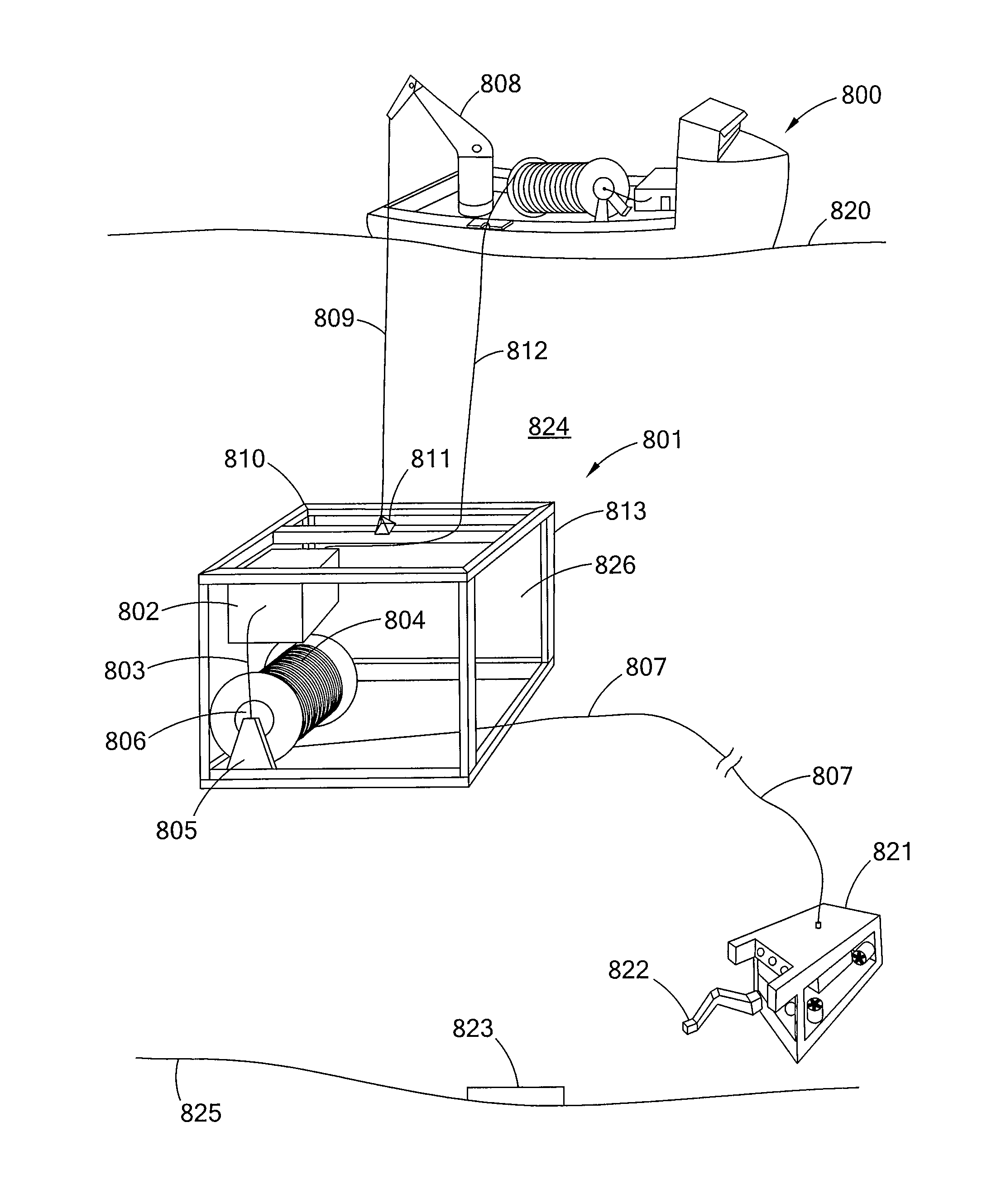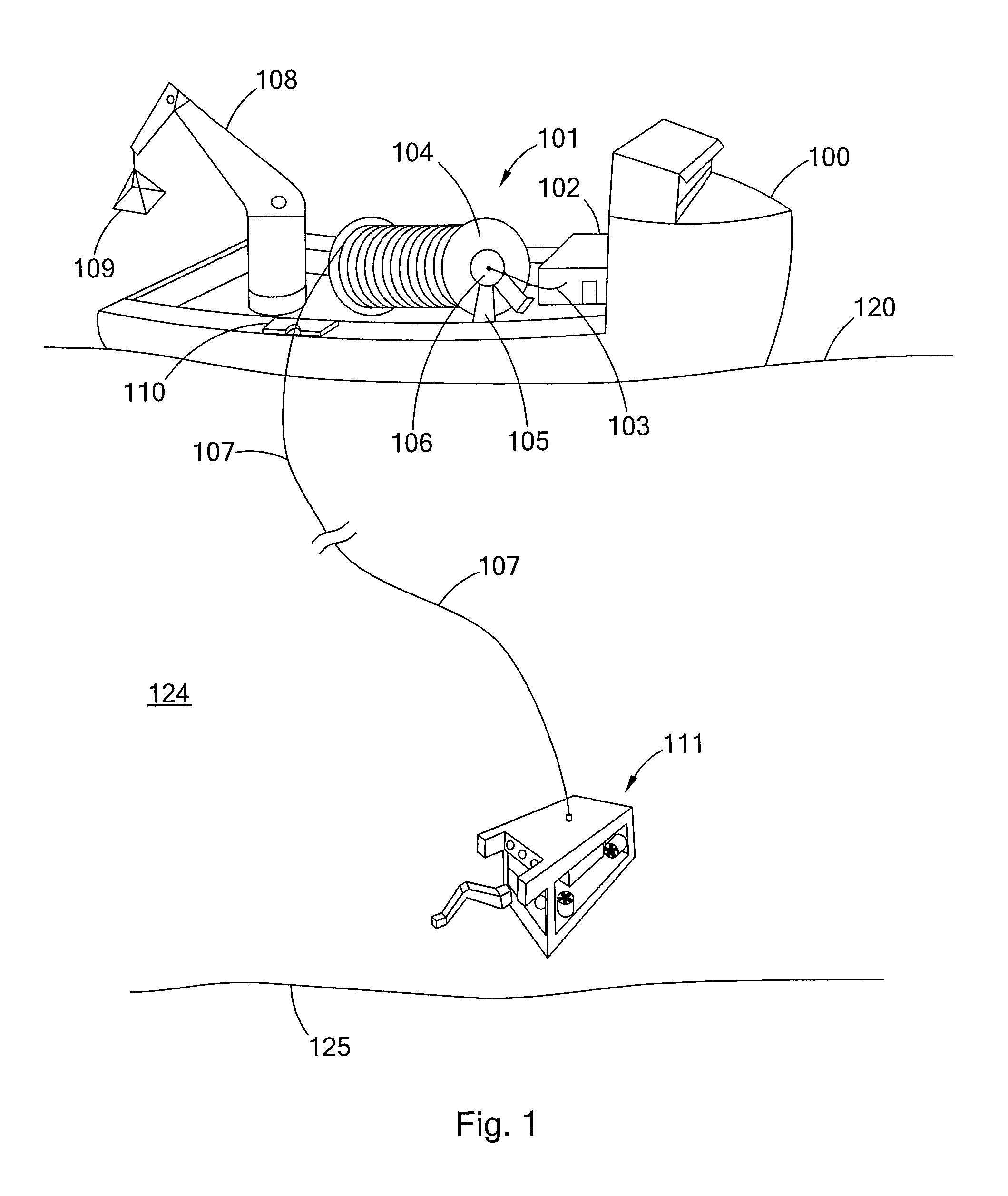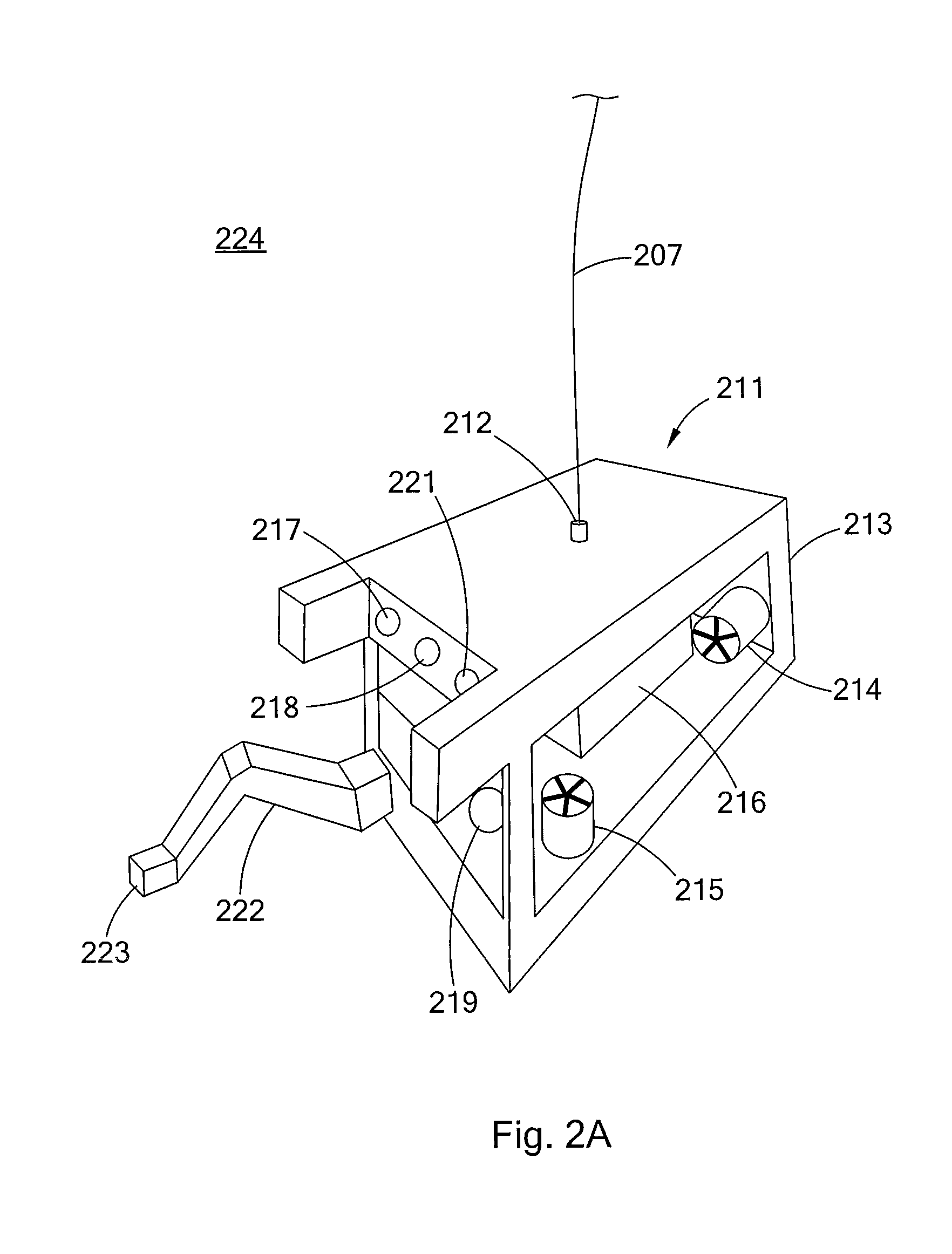High power laser photo-conversion assemblies, apparatuses and methods of use
a technology of laser photoconversion and assembly, which is applied in the direction of special purpose vessels, optical radiation measurement, and other directions, can solve the problems of increasing obstacles and risks, increasing costs, and increasing complexity of underwater activities and structures, and achieving the effect of not losing substantial power
- Summary
- Abstract
- Description
- Claims
- Application Information
AI Technical Summary
Benefits of technology
Problems solved by technology
Method used
Image
Examples
example 1
[0146]Turning to FIG. 20 there is shown an embodiment of a laser PV assembly having 1 single junction PV cell 2000 for use with a laser beam having a spectrum of the type shown in FIGS. 16-19. The single junction PV cell 2000 has a grid design 2002 optimized for low resistance, including 4 busbars 2003a, 2003b, 2003c, 2003d. The single junction PV cell 2000 has an antireflective coating 2004. The PV cell 2000 has a window 2010, a highly doped, low resistance emitter 2011, a base with band gap tailored to the laser energy 2012, a back surface field 2013, buffer layer(s) and / or substrate 2014 and a back contact 2005.
example 2
[0147]Turning to FIG. 21 there is shown an embodiment of a laser PV assembly having 1 triple junction PV cell 2100 for use with a laser beam having a spectrum of the type shown in FIGS. 16-19. The triple junction PV cell 2100 has a grid design 2102 optimized for low resistance, including 4 busbars 2103a, 2103b, 2103c, 2103d. The triple junction PV cell 2100 has an anti-reflection coating 2104. The PV cell has a top junction 2110, a middle junction 2112 and a bottom junction 2114. The junctions are connected together in series by tunnel junctions 2111 and 2113. Each of the top 2110, middle 2112 and bottom 2114 junctions has an emitter, base, back surface field, and may also include a window and buffer layer(s). The base of each junction is the same material, with a band gap tailored to the laser energy. The thickness of the base in each junction is chosen such that the current produced by each junction is approximately the same. Thus, the base is thinnest in the top junction 2110 and...
example 3
[0148]Turning to FIG. 22 there is shown an embodiment of a laser PV assembly 2200 having 4 PV cells 2201, 2202, 2203, 2204 connected in series for use with a laser beam having a spectrum of the type shown in FIGS. 16-19. The 4 PV cells 2201, 2202, 2203, 2204 may all have the same design, which may be similar to those shown in Examples 1 and 2. The cells are connected in series by wire bonds 2205 or other interconnections so that the total current out of the PV assembly 2200 is the lowest of the currents produced by the 4 PV cells 2201, 2202, 2203, 2204, and the voltage out of the assembly is approximately the sum of the voltages of the 4 PV cells 2201, 2202, 2203, 2204 when operating at that single current. In this illustration, power is extracted from the assembly by leads 2206.
PUM
 Login to view more
Login to view more Abstract
Description
Claims
Application Information
 Login to view more
Login to view more - R&D Engineer
- R&D Manager
- IP Professional
- Industry Leading Data Capabilities
- Powerful AI technology
- Patent DNA Extraction
Browse by: Latest US Patents, China's latest patents, Technical Efficacy Thesaurus, Application Domain, Technology Topic.
© 2024 PatSnap. All rights reserved.Legal|Privacy policy|Modern Slavery Act Transparency Statement|Sitemap



